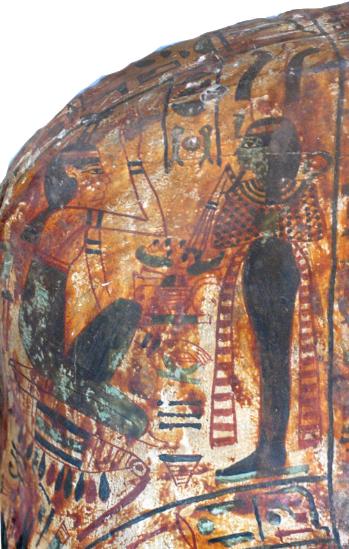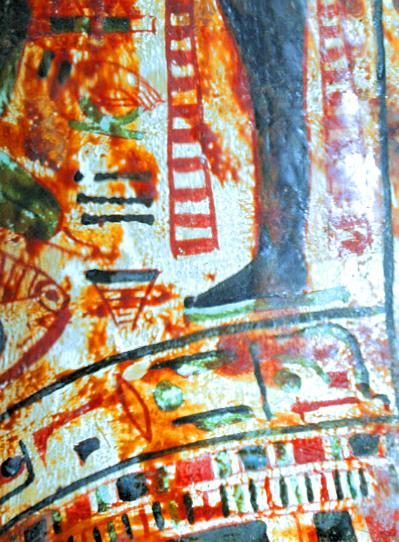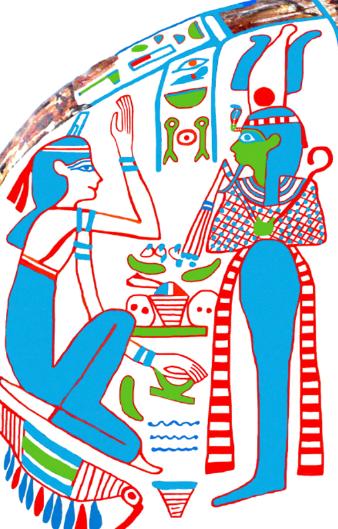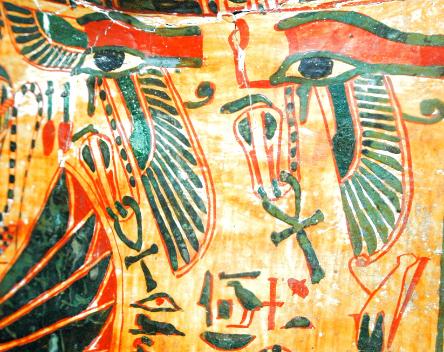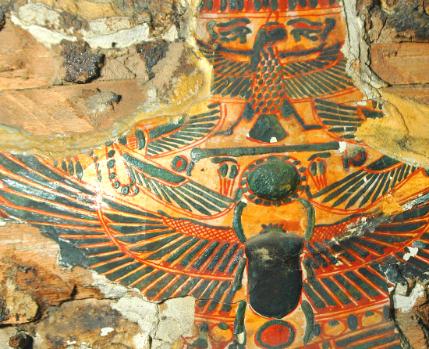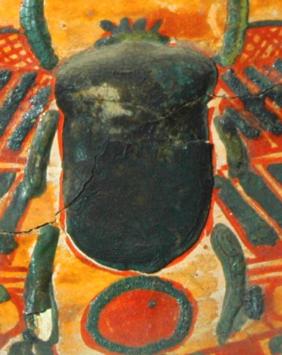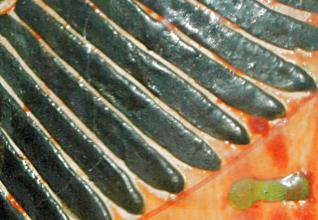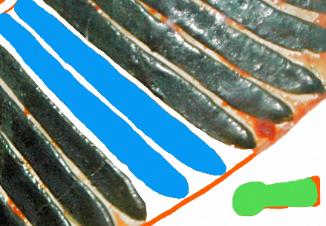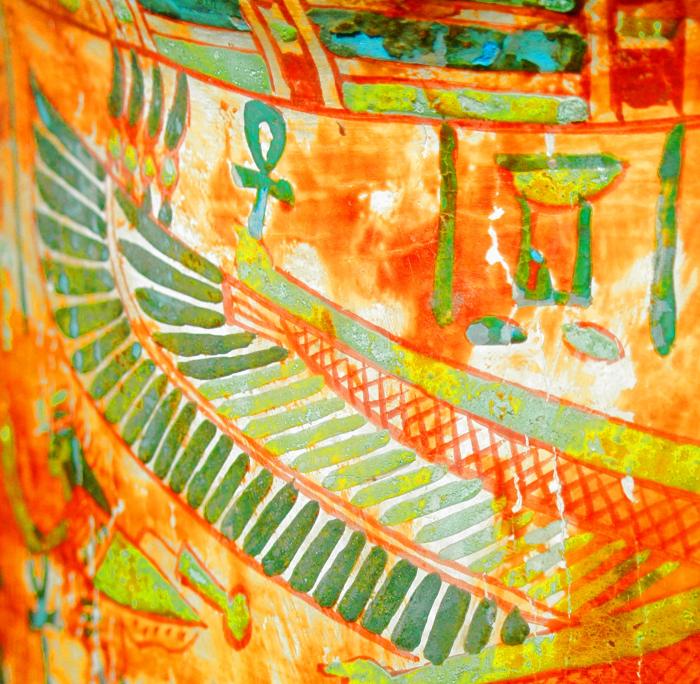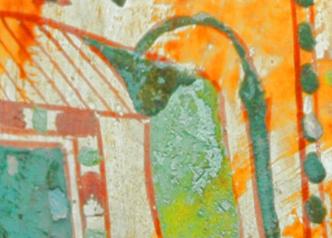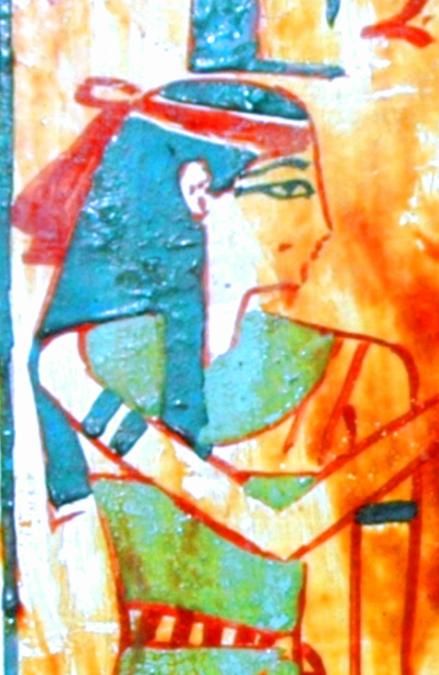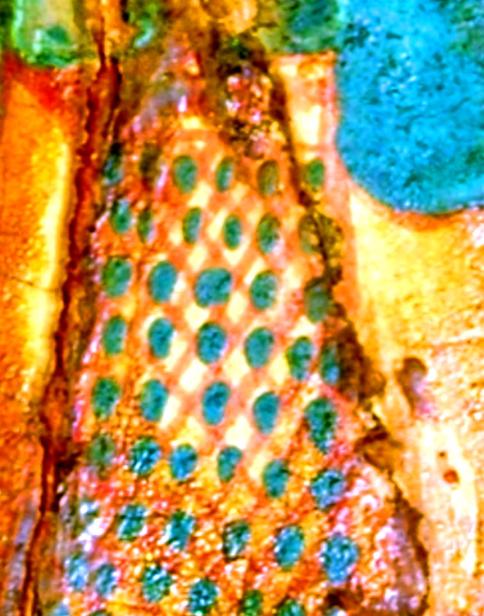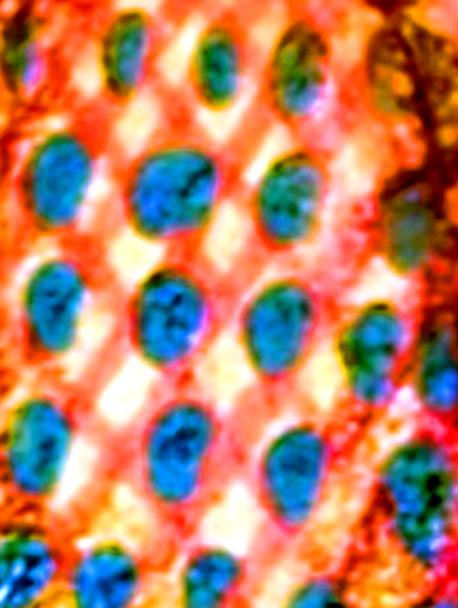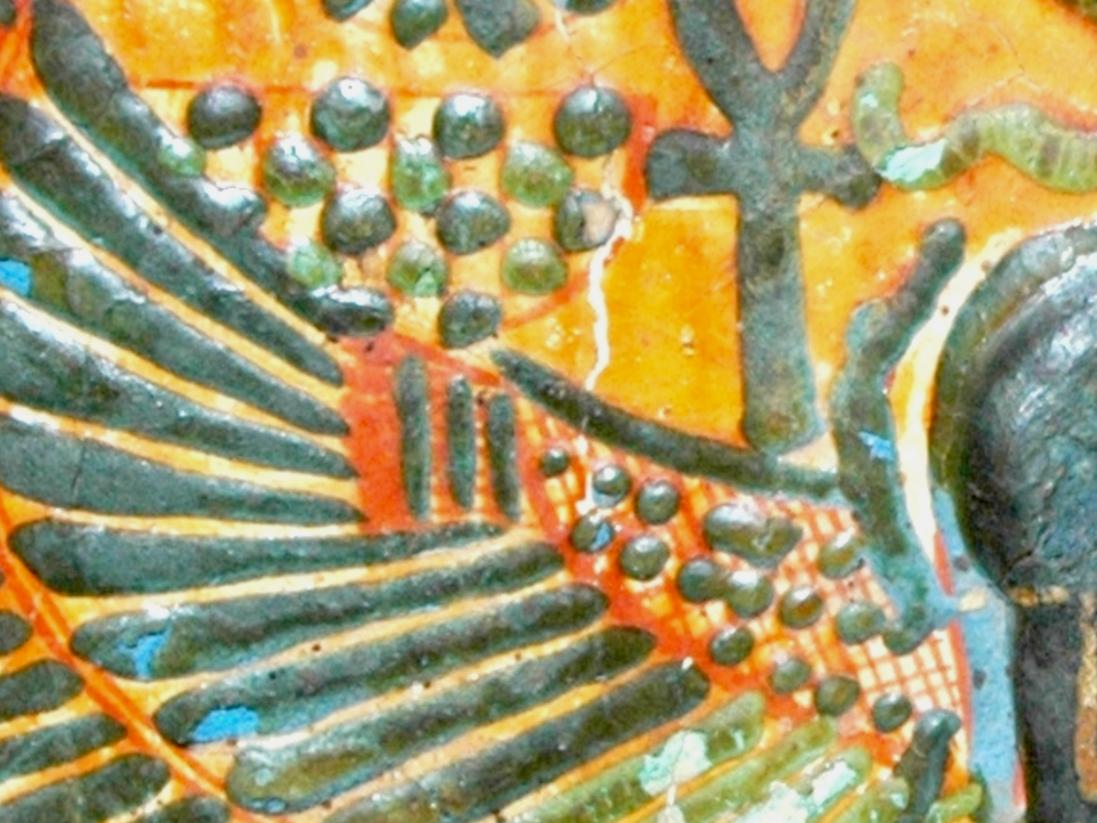| Russian Academy of Sciences Centre for Egyptological Studies, Moscow (CESRAS) & Russian Institute of Egyptology in Cairo (RIEC) Research on the Funerary Art of the 21a Theban Dynasty of Payanch and Personages of that Period (1070-945 BCE) Site Directory Personages Artifacts Iconography Deities Royal Cache TT320 Network Index |
Intellectual property of the Russian Academy of Sciences, Centre for Egyptological Studies, Moscow R.F. This material may be freely used for non-commercial, educational,
and public services applications. If you use our material, please give a credit to CESRAS, Moscow, and make a link to http://www.cesras.org. You may contact us by email:
admin@cesras.org and we would be happy to help you in any way we can. Thanks for your visit to this site and please do come again. There will always be something new!
and public services applications. If you use our material, please give a credit to CESRAS, Moscow, and make a link to http://www.cesras.org. You may contact us by email:
admin@cesras.org and we would be happy to help you in any way we can. Thanks for your visit to this site and please do come again. There will always be something new!
ACHIEVEMENTS AND PROBLEMS OF MODERN EGYPTOLOGY
Proceedings of the International Conference held in Moscow on September 29-October 2, 2009
Edited by Galina A. Belova
Original photographic addenda to the paper THEY WERE NOT YELLOW,
Edward R. Loring
Due to financial limitations it was not possible to include colour images of great importance to this detailed
scientific investigation of the painted anthropoid coffins of the Dynasty of the High Priest of Amun (HPA)
Payanch (pAyanx, Piankh) in the printed volume of the procedings. The Dynasty of Payanch was a true family
dynasty with power passing from father to son, or brother to brother with rule over Upper Egypt between ca.
1070 and 945 BCE. In spite of close and important blood relationships with the 21st Dynasty "Official" kings
in Tanis, such an unbroken direct family succession in Tanis is questionable. Thus, we propose that
henceforth the Theban line be termed Dynasty 21a.
Following are the images listed in the Proceedings, pp. 214-15, giving proof of original white backgrounds. All
of these objects and scenes are on public display in the National Museum, Cairo, where they offer direct proof
of the claims made here. Click on images for larger versions. The photographs were made under very poor
conditions with poor lighting and through uncleaned glass. However, we are showing unprocessed versions
(no "photoshopping"), although in some cases some lightening has been necessary. In such cases it has
been mentioned. You must remember that all of these objects have suffered both ancient and modern
mistreatment.
Proceedings of the International Conference held in Moscow on September 29-October 2, 2009
Edited by Galina A. Belova
Original photographic addenda to the paper THEY WERE NOT YELLOW,
Edward R. Loring
Due to financial limitations it was not possible to include colour images of great importance to this detailed
scientific investigation of the painted anthropoid coffins of the Dynasty of the High Priest of Amun (HPA)
Payanch (pAyanx, Piankh) in the printed volume of the procedings. The Dynasty of Payanch was a true family
dynasty with power passing from father to son, or brother to brother with rule over Upper Egypt between ca.
1070 and 945 BCE. In spite of close and important blood relationships with the 21st Dynasty "Official" kings
in Tanis, such an unbroken direct family succession in Tanis is questionable. Thus, we propose that
henceforth the Theban line be termed Dynasty 21a.
Following are the images listed in the Proceedings, pp. 214-15, giving proof of original white backgrounds. All
of these objects and scenes are on public display in the National Museum, Cairo, where they offer direct proof
of the claims made here. Click on images for larger versions. The photographs were made under very poor
conditions with poor lighting and through uncleaned glass. However, we are showing unprocessed versions
(no "photoshopping"), although in some cases some lightening has been necessary. In such cases it has
been mentioned. You must remember that all of these objects have suffered both ancient and modern
mistreatment.
CAI-CG61027, HPA Masaharta, 1055-1046: outer coffin, foot left. Click here for person click here for mummy
Original Photo "as-is"
Foot of Osiris; end of sash lightend, no editing
The clear draughtsman's lines on white gesso are
absolute proof of an originally white surface. Note
roughly applied varnish
The clear draughtsman's lines on white gesso are
absolute proof of an originally white surface. Note
roughly applied varnish
The scene before
varnishing was bright,
colourful, and on a white
background. ERL/CESRAS/05.09
varnishing was bright,
colourful, and on a white
background. ERL/CESRAS/05.09
CAI-CG61032, Tayuheret, supposed wife of HPA Masaharta. No dates known. Her coffins are usurped. The names of the original
owner, the lady Hatet are, but for one, crudely overpainted with various careless orthographies of the new owner's name.
click here for mummy
owner, the lady Hatet are, but for one, crudely overpainted with various careless orthographies of the new owner's name.
click here for mummy
A clear example of an originally white
background very carelessly varnished. The
spaces between the wing feathers are very
frequently white, as the feathers were
somewhat raised and the crude varnish brush
did not penetrate to these lower lying areas.
background very carelessly varnished. The
spaces between the wing feathers are very
frequently white, as the feathers were
somewhat raised and the crude varnish brush
did not penetrate to these lower lying areas.
The spaces between the feathers of the winged
serpents clearly show a white
background
serpents clearly show a white
background
White is shown in the outline
of the scarab (the damaged
area at lower left where the
encrusted leg is broken is a
different proof of white
of the scarab (the damaged
area at lower left where the
encrusted leg is broken is a
different proof of white
CAI CG61028, God's Wife of Amun Maatkaraw, daughter of HPA & King Paynedjem I and Queen Henwttawy
Typical example of white remaining between feathers where the crude
varnish brush did not penetrate. Untouched original at left. At right middle the
original colours, showing a menat almost hidden by the varnish. The yellow
varnish, or yellowing through age, has caused the original blue to become
dark green or black. This is the case on all varnished coffins of the period.
The green menat remains green, yellow being a component of green
varnish brush did not penetrate. Untouched original at left. At right middle the
original colours, showing a menat almost hidden by the varnish. The yellow
varnish, or yellowing through age, has caused the original blue to become
dark green or black. This is the case on all varnished coffins of the period.
The green menat remains green, yellow being a component of green
Original, unprocessed image, showing the
discolouration of the white background through
age and by dirt and improper storage.
Typical universal careless application of the
varnish is also clear.
discolouration of the white background through
age and by dirt and improper storage.
Typical universal careless application of the
varnish is also clear.
The original white background is so clear that any comment is unnecessary.
Neskhons (Nesychonsw nsyHnsw), Cairo CG61030, daughter of HPA Smendes II & niece-wife of HPA Paynedjem II, Smendes II
having been Pinodjem's elder brother or half brother. She died unexpectedly in the 5th year of the Tanite King Siamun (974 BCE).
TT320 was made by Paynedjem (who died five years later) as a tomb for her, his great eternal love, and himself only, not as a
family tomb or othersuch as generally wrongly stated in egyptological literature without a scrap of evidence.
click here for person (in process) click here
for mummy
having been Pinodjem's elder brother or half brother. She died unexpectedly in the 5th year of the Tanite King Siamun (974 BCE).
TT320 was made by Paynedjem (who died five years later) as a tomb for her, his great eternal love, and himself only, not as a
family tomb or othersuch as generally wrongly stated in egyptological literature without a scrap of evidence.
click here for person (in process) click here
for mummy
A typical net dress is shown here. The draughtsman's red lines, as we have seen before, are always secure proof of
drawing and painting on a white gesso background. It is informative to note the portion of a wig at upper right in the
left hand image. The blue pigment was inorganic blue faience powder mixed with an unknown binder, probably
gummi arabicum, which by its generally viscous nature formed raised areas where applied (wigs,
feathers, dresses, hieroglyphs etc. The surfaces of this often unstable material were frequently broken off,
exposing the original colour. In all cases studied in this project it became clear that once bright blue areas have
mutated to dark green or black, giving modern viewers an entirely false impression of how the paintings looked
when fresh and unvarnished. As blue is the principle colour on these coffins, viewers today see images which are
entirely wrong. This is the case with all coffins, irrespective of background colour.
drawing and painting on a white gesso background. It is informative to note the portion of a wig at upper right in the
left hand image. The blue pigment was inorganic blue faience powder mixed with an unknown binder, probably
gummi arabicum, which by its generally viscous nature formed raised areas where applied (wigs,
feathers, dresses, hieroglyphs etc. The surfaces of this often unstable material were frequently broken off,
exposing the original colour. In all cases studied in this project it became clear that once bright blue areas have
mutated to dark green or black, giving modern viewers an entirely false impression of how the paintings looked
when fresh and unvarnished. As blue is the principle colour on these coffins, viewers today see images which are
entirely wrong. This is the case with all coffins, irrespective of background colour.
Subsequent to the Moscow conference, I have added the examples above. The image shows several things which we have
observed above: red draughtsman's lines on white and fractured surfaces of blue painting turned green by reaction with
varnish. The ankh symbol is always blue (frequently used hieroglyphic signs have traditional colours). Here we see it in the
same green as a damaged feather at lower left, showing its original blue; proof that the ankh and scarab were also blue.
As green is a mixture of yellow and blue, original green is not mutated as shown by the end of a ram's horn touching the
ankh symbol. The innermost (generally five) feathers of an upper wing register are generally green, faintly depicted here.
For those of you who are interested in classical details of Ancient Egyptian design and graphic, we have here a fine example
of the complete layout of an often repeated, but seldom complete detail: the junction of a wing to a central figure, in this case
a scarab. The ankh symbol and basket above the wing are to be discounted. The junction of the wing is with the upper left leg
of the scarab, both originally blue. Below this is a field of finely drawn lines, forming a network of squares, in this case
punctuated with blue dots. To the left of this field are three vertical blue lines crossed by thin red lines and ending in a broad
red field from which blue feathers protrude. The innermost feathers are green, crossed by the blue middle leg of the scarab.
The two levels of feathers are separated by carefully drawn red lines. Before varnishing the stripe between these lines was
white.
observed above: red draughtsman's lines on white and fractured surfaces of blue painting turned green by reaction with
varnish. The ankh symbol is always blue (frequently used hieroglyphic signs have traditional colours). Here we see it in the
same green as a damaged feather at lower left, showing its original blue; proof that the ankh and scarab were also blue.
As green is a mixture of yellow and blue, original green is not mutated as shown by the end of a ram's horn touching the
ankh symbol. The innermost (generally five) feathers of an upper wing register are generally green, faintly depicted here.
For those of you who are interested in classical details of Ancient Egyptian design and graphic, we have here a fine example
of the complete layout of an often repeated, but seldom complete detail: the junction of a wing to a central figure, in this case
a scarab. The ankh symbol and basket above the wing are to be discounted. The junction of the wing is with the upper left leg
of the scarab, both originally blue. Below this is a field of finely drawn lines, forming a network of squares, in this case
punctuated with blue dots. To the left of this field are three vertical blue lines crossed by thin red lines and ending in a broad
red field from which blue feathers protrude. The innermost feathers are green, crossed by the blue middle leg of the scarab.
The two levels of feathers are separated by carefully drawn red lines. Before varnishing the stripe between these lines was
white.
Before we start this considerably enlarged version of a talk given by E. Loring
in Moscow based on original CESRAS(that stands for The Centre for
Egyptological Studies of the Russian Academy of Sciences, Moscow, R.F.:
Director Dr. Galina Alexandrovna Belova) we should mention that photographs
made largely by Research Fellow Dr. Sergej V. Ivanov whose photographic
talent and expertise has created an extensive archive of images never seen
before. Digital editing, page layouts and texts were made by Research Fellow
Edward R. Loring as a more complete and educational version of his time
limited presentation at the Moscow Conference. This is scientific research
basis from which we hope our fellow egyptologists, world wide, will find new
material upon which they can follow up and develop. This is a very small
insight into the vast heritage of all human beings. It is something to build on.
erl/CESRAS/2014
in Moscow based on original CESRAS(that stands for The Centre for
Egyptological Studies of the Russian Academy of Sciences, Moscow, R.F.:
Director Dr. Galina Alexandrovna Belova) we should mention that photographs
made largely by Research Fellow Dr. Sergej V. Ivanov whose photographic
talent and expertise has created an extensive archive of images never seen
before. Digital editing, page layouts and texts were made by Research Fellow
Edward R. Loring as a more complete and educational version of his time
limited presentation at the Moscow Conference. This is scientific research
basis from which we hope our fellow egyptologists, world wide, will find new
material upon which they can follow up and develop. This is a very small
insight into the vast heritage of all human beings. It is something to build on.
erl/CESRAS/2014
HPA stands for High Priest of Amun, the title of the ruler of Upper Egypt 1070-945 BCE
Words in bright blue are links
